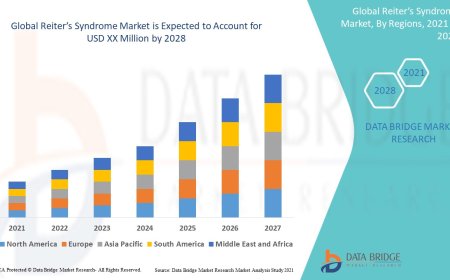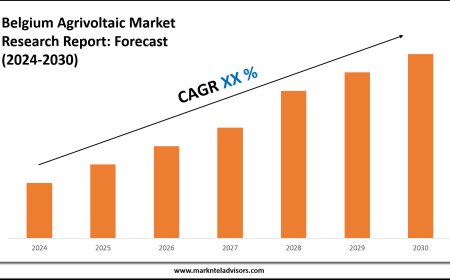How to Build a Balanced Crypto Portfolio?
Learn how to build a balanced crypto portfolio by diversifying assets, managing risk, and aligning investments with your financial goals.

In 2025, the crypto market continues to evolve rapidly, making it essential for investors to build and manage a well-diversified crypto portfolio. Whether you are a beginner or an experienced trader, understanding how to balance risk and opportunity across various digital assets is key to long-term success.
What Is a Crypto Portfolio?
A crypto portfolio is a collection of different digital assets held by an investor. It includes various coins, tokens, and cryptocurrencies, such as Bitcoin, Ethereum, and emerging altcoins. Investors use portfolios to track their holdings, monitor performance, and effectively plan their trading and investment strategies.
Why Portfolio Diversification Matters in Cryptocurrency?
Crypto portfolio diversification is more than just spreading assets across multiple coins. It helps reduce risk and increases the chance of stable returns. Relying too heavily on a single asset exposes users to market volatility. A balanced crypto portfolio typically includes:
- Large-cap cryptocurrencies like Bitcoin and Ethereum
- Mid-cap and small-cap altcoins
- Stablecoins for liquidity
- DeFi tokens or NFTs for exposure to emerging trends
Diversifying across asset classes, blockchains, and sectors such as decentralized finance (DeFi) can enhance portfolio performance during market fluctuations.
How to Choose the Right Crypto Portfolio Tracker?
Managing a diverse crypto portfolio requires the right tools. A crypto portfolio tracker enables users to monitor their holdings in real-time, track price changes, and analyze asset performance across multiple exchanges and wallets.
Key Features to Look For in a Crypto Portfolio Tracker:
- Real-time data synchronization with popular exchanges
- Automatic transaction imports from wallets like MetaMask and Ledger
- Portfolio performance analytics, including gain, loss, and ROI reports
- Tax reporting tools to simplify capital gains calculation
- Mobile app access for on-the-go portfolio tracking
- Price alerts and notifications for better decision-making
Top platforms like CoinStats and Delta have become favorites among crypto investors due to their user-friendly interfaces and extensive market data integration.
Best Crypto Portfolio Apps to Consider in 2025
Selecting the best crypto portfolio app depends on your trading habits and investment goals. Here are some leading apps for effective portfolio management:
- CoinStats: Known for cross-platform support and real-time price tracking
- Delta: Popular among advanced traders for deep performance insights
- CoinTracker: Focuses on tax reporting and integrates with multiple exchanges
- Kubera: Combines crypto portfolios with traditional asset tracking
- Blockfolio (now FTX App): Offers seamless mobile access and market alerts
Each platform offers free plans with essential features, while premium versions unlock advanced analytics and auto-sync trades across wallets and exchanges.
Crypto Portfolio Management Best Practices
Effective crypto portfolio management involves more than just tracking balances. Here are key strategies to maintain a healthy investment portfolio:
- Regular Rebalancing: Adjust your allocations based on market conditions and asset performance
- Setting Price Alerts: Stay informed about major market moves
- Monitoring Risk Exposure: Limit over-concentration in high-risk altcoins
- Using Tax Reporting Tools: Keep track of taxable events to simplify filing at the end of the year
- Planning for Long-Term Growth: Align your investment plan with your risk tolerance and financial goals
How to Monitor Performance and Make Informed Decisions
By utilizing advanced crypto portfolio trackers, users can analyze historical performance, view profit and loss breakdowns, and compare their portfolio returns against those of the broader market. Apps like CoinStats and Delta provide real-time updates, enabling investors to make informed decisions based on reliable data.
Features That Support Smart Decision-Making:
- Customizable price alerts
- Historical ROI tracking
- Exchange and wallet integrations
- Portfolio growth charts over time
- Market trend indicators
Tax Reporting and Compliance for Crypto Portfolios
Managing a crypto portfolio also involves understanding tax obligations. Most countries require investors to report capital gains and losses from crypto trading. Using portfolio apps with integrated tax reporting tools ensures accuracy and saves time during tax season.
Final Thoughts
Building a diversified and balanced cryptocurrency portfolio in 2025 requires a combination of informed investment choices, continuous monitoring, and effective risk management. Using a reliable crypto portfolio tracker, such as CoinStats or Delta, can help you stay ahead of market trends, manage your digital assets securely, and make data-driven investment decisions.
Whether you are optimizing for short-term gains or long-term growth, maintaining a well-managed crypto portfolio with the right tools is essential for achieving your financial goals in the dynamic world of cryptocurrencies.





































